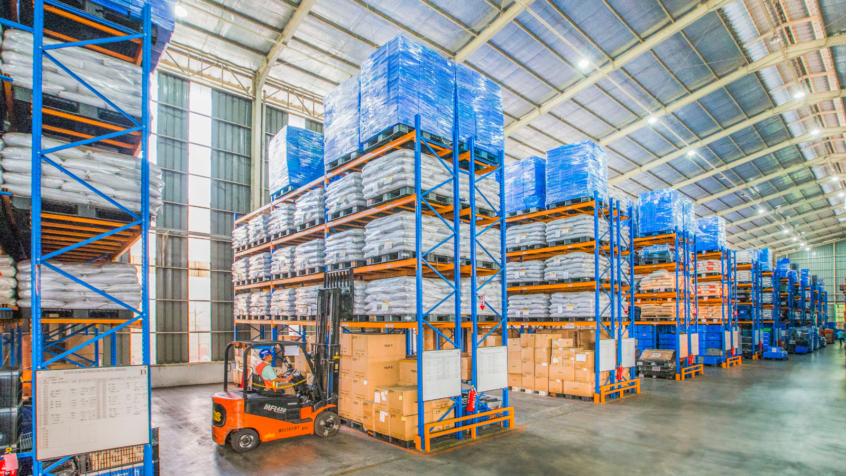In the dynamic realm of supply chain management, businesses are constantly on the lookout for innovative strategies to streamline operations, reduce expenses, and enhance customer satisfaction. One strategy that has gained considerable popularity is known as cross-docking, a logistical approach that offers numerous advantages capable of revolutionizing the efficiency and effectiveness of supply chain operations.
What is cross docking?
Cross-docking, in essence, involves the direct transfer of products from the manufacturing facility or supplier warehouse to a retail chain or customer, with minimal time spent in the warehouse. This method aims to minimize the handling required for transporting materials from suppliers to manufacturers and finished products from manufacturers to customers.
Typically, cross-docking takes place in a warehouse where one section handles incoming items while the other manages outgoing items. When executed properly, goods passing through the cross-docking process spend only a few hours, or even less, within the warehouse.
This strategy proves particularly beneficial for temperature-sensitive items, perishables, pre-sorted and packed goods, and similar products. It is especially advantageous for businesses with high inventory turnover rates, such as those operating in the pharmaceutical, fashion, and food industries.
Types of Cross Docking
1. Continuous Cross-Docking:
Continuous cross-docking is the most fundamental form of this strategy. It involves a centralized terminal where items are swiftly transferred from one truck to another. The terminal is usually designed in a linear fashion, facilitating quick and efficient loading and unloading processes. In the case of one truck arriving earlier or later than the other, the waiting truck ensures that the transfer of products is completed without delay. When the identical products arrive, they are immediately moved from one truck to another. This method allows for seamless synchronization of product flow and minimizes storage time in the warehouse.
2. Consolidation Cross-Docking:
Consolidation cross-docking is employed when multiple items need to be combined in one location before being transported to another site. For instance, if a large retail store has already placed an order for goods, it would be inefficient to dispatch multiple trucks that are not fully loaded. Consolidation cross-docking resolves this issue by combining separate shipments into a single outgoing vehicle. This process enables the unloading and temporary storage of different goods until the departing truck arrives. By optimizing truck capacity and reducing the number of trips, businesses can save on transportation costs while maintaining an efficient supply chain.
3. Deconsolidation Cross-Docking:
On the flip side, deconsolidation cross-docking involves unloading a variety of merchandise from a sizable inbound truck at the terminal’s storage area. The items are then sorted and individually placed into departing trucks. This strategy is typically employed when products are directly supplied to customers as smaller, individual purchases. By separating the items at the terminal, businesses can expedite order fulfillment, resulting in faster delivery to customers. Moreover, deconsolidation cross-docking helps reduce transfer, handling, and shipping expenses, making it an economically viable solution.
Benefits of Cross Docking
- Enhanced Operational Efficiency: Cross-docking eliminates the need for long-term storage and warehousing of goods. Instead, it emphasizes the direct transfer of products from inbound to outbound transportation vehicles with minimal handling or storage. By reducing handling and storage time, cross-docking minimizes the risk of product damage, loss, or obsolescence. This streamlined approach significantly improves operational efficiency, reduces inventory holding costs, and accelerates order fulfillment processes.
- Reduced Inventory Holding Costs: One of the most significant benefits of cross-docking is its impact on inventory management. With cross-docking, companies can maintain lower inventory levels, as goods are quickly transferred from the receiving dock to the outbound dock for immediate shipment. This reduction in inventory holding costs translates into substantial savings for businesses, freeing up capital that can be allocated towards other critical areas of the supply chain.
- Faster Order Fulfillment and Improved Customer Satisfaction: By eliminating unnecessary storage time, cross-docking enables faster order fulfillment. Incoming products are sorted and prepared for immediate outbound shipment, ensuring quicker delivery to customers. This swift response time enhances customer satisfaction, as orders are fulfilled promptly, meeting or exceeding customer expectations. Additionally, the ability to handle high-volume orders efficiently allows businesses to capitalize on time-sensitive opportunities and meet demanding market demands.
- Optimal Resource Utilization: Cross-docking optimizes the utilization of resources within the supply chain. By strategically coordinating incoming and outgoing shipments, companies can maximize the use of transportation assets, reduce transportation costs, and minimize fuel consumption. The efficient utilization of resources not only contributes to cost savings but also reduces carbon footprint, aligning supply chain operations with sustainability goals.
- Seamless Integration with Supply Chain Partners: Cross-docking fosters collaboration and seamless integration with supply chain partners. It enables real-time information sharing, coordination, and synchronization of activities among suppliers, manufacturers, distributors, and retailers. This collaborative approach ensures smooth and efficient flow of goods, reducing lead times and enhancing overall supply chain visibility.
In today’s ever-changing supply chain landscape, staying ahead of the competition requires businesses to embrace innovative strategies. Cross-docking, a dynamic logistics solution, offers a multitude of benefits, including optimized operations, cost reduction, and enhanced customer satisfaction. However, it’s essential to analyze whether your business and its products are suitable for this type of logistical approach. By carefully evaluating your operations and product characteristics, you can determine if cross-docking is the right fit for your business, enabling you to unlock the full potential of this efficient supply chain solution.

